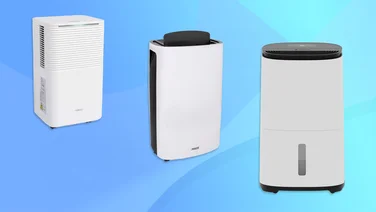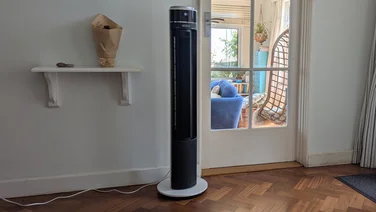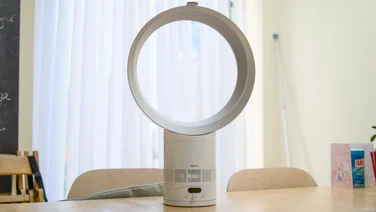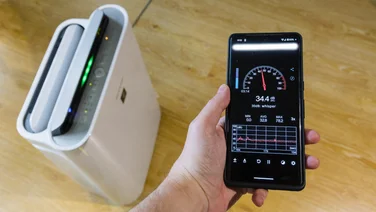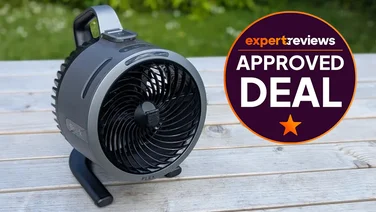To help us provide you with free impartial advice, we may earn a commission if you buy through links on our site. Learn more

Have you noticed condensation on your windows or patches of damp and mould start to appear in your home over the winter months? Conversely, does it feel rather clammy or stuffy indoors during the warmer, more humid weather?
Well, all of these issues are actually caused by a build-up of moisture in the air. And when there’s too much moisture this can cause a range of problems in your home, such as poor air quality, wood rot (thanks to woodworm attracted to the damp) and even cracked paint and peeling wallpaper.
Mould or mildew can also create a number of health issues such as respiratory infections and illnesses, asthma and triggering allergies.
READ NEXT: Best dehumidifiers
How to determine the humidity of your home
If you’re still not sure whether you need a dehumidifier or a humidifier, or you want to compare the pros and cons of each, we’ve created a handy guide on dehumidifiers vs humidifiers to refer to. The general distinction between the two is that a dehumidifier is used to remove excess moisture from the air in your home, whereas a humidifier adds moisture back.According to experts, your home’s natural humidity should be somewhere between 30% and 50%. While you’ll need an indoor humidity monitor or hygrometer for a precise reading, you can also use a few ice cubes in a glass (see below) to determine if there’s too much moisture in the air.
Simply take a glass of water and place four or five ice cubes in it, then leave the glass in the room where you want to check the humidity level. Wait for around ten minutes before checking it. If there’s condensation on the outside of the glass, that means the room has a relatively high humidity level and there’s too much moisture in the air. If there’s no condensation on the glass at all, this could indicate insufficient moisture in the air.

If the air in your home has over 50% humidity, that’s when you should consider using a dehumidifier. But what exactly does one do?
Well, a dehumidifier extracts the excess moisture from the air, which it then collects in its water tank. This is where you’ll see just how much excess moisture there was in your home. You might need to empty the tank daily, or every other day, depending on the level of humidity and moisture in your home, to stop the dehumidifier from turning itself off once the tank is full. Cooler, drier air is then released back into your home through the other side of the machine.
READ NEXT: Best dehumidifiers for drying clothes
What types of dehumidifier are there?
When shopping for dehumidifiers you’ll come across two main types – either refrigerant/compressor or desiccant-based models. Here’s what sets them apart:

Refrigerant/compressor: While excess moisture can occur all year round, this type of device is particularly effective in warmer environments and weather. This is because a refrigerant or compressor dehumidifier draws the air in through a filter and over cold coils. The excess moisture in the air then condenses on the coils before dripping into the water tank.
Because this type of dehumidifier needs the air in the room to be warmer than the cold coils within it, they work better in a warm and stuffy environment than a particularly cold one.
Desiccant: A desiccant dehumidifier, on the other hand, works better in colder temperatures. This makes it a great option for conservatories, unheated basements, outbuildings and even garages. This type of dehumidifier operates by using an absorbent material to extract moisture from the air, which is then heated so that the moisture drips into the water tank.

Dehumidifiers are also available in a wide range of different sizes and prices. Confused where to begin? There’s no need – we’ve done all the hard work for you with our list of the best tried and tested dehumidifiers. With options for smaller and larger homes, you’ll find several suggestions to help you decide which is best for your living space.
READ NEXT: Best portable air conditioners
When should I use a dehumidifier?
One of the first signs that there could be too much moisture in the air of your home is excess condensation. This will most likely appear on your windows. You may also have noticed dark spots of mould or mildew on your walls and ceilings, with your bathroom being particularly prone to both mould and mildew, especially in the colder months.
Another telltale sign that the humidity levels are particularly high is if you often smell a musty odour in your home.
If you’ve experienced any of these issues, you’ll want to quickly test the area or room with the “ice cube trick” mentioned above to see if the symptoms are being caused by excess moisture in the air. (As stated previously, if the air in your home has over 50% humidity, that’s when you should consider using a dehumidifier.)

Some of the rooms that can benefit most from a dehumidifier are bathrooms, kitchens, laundry rooms, basements and garages.
READ NEXT: Best humidifers
Can a dehumidifier help to dry clothes?
During the colder months it can be particularly tricky to dry wet laundry. From clothing and towels all the way through to bedding, if you don’t have a tumble dryer, or you find running one too pricey, you’ll most likely have to rely on drying your laundry indoors.
However, many of us will be reluctant to turn on our heating due to the rise in energy costs and the general cost of living. Hanging wet laundry over your radiators also means that your heating won’t be able to work as effectively to heat your home either.
This is actually when a dehumidifier used in tandem with a heated clothes airer can be particularly effective. The dehumidifier will help to draw the excess moisture or wetness from your damp laundry, in turn speeding up the process of drying your clothes, while stopping the wet clothes and towels from adding excess moisture into the air while it dries.
Simply positioning a dehumidifier nearby can be a much more eco-conscious way of drying your wet laundry indoors.


